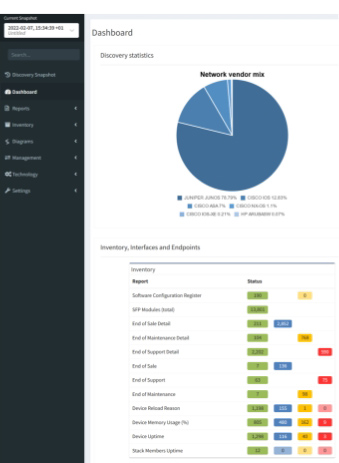

In a previous article, we briefly touched upon how the implementation of cloud structures into existing on-premises networks can hinder cross-team collaboration. Cloud and on-prem teams simply function in different realities.
Whilst their differing skills and realities can lead to the formation of dreaded siloes, the situation is not necessarily black and white. Let's look at how the nature of cloud solutions CAN actually assist in breaking down siloes and foster collaboration between them.
Before diving in, it's important to note that collaborative issues existed before the cloud. During the heyday of on-premises networks, teams could still become siloed. There are certain aspects of the cloud that actually helped to break down these more traditional siloes.
For example, when deploying a new application within an instance strictly on-prem, multiple teams would need to be involved in configuring ports, creating and trunking VLANs, etc. Delegating these tasks across teams, potentially across different time zones, could lead to kinks in the communication chain, creating confusion, miscommunications and eventually siloes. With the cloud, this can all be done under the hood. It's more of a case of saying "Spin x up on this IP address and give me the connectivity I need" - letting teams operate faster and more consistently.
Such processes can also be performed with increased accountability thanks to the cloud. Cloud platforms preserve records of activity, establishing more transparent processes. Gone are the days of waiting longer than necessary for another department to fulfill their end of the bargain, or wondering who it was that made a particular change. A quick check lets you know who is responsible for what in case changes need to be made.
The cloud provides a single API for teams to manage their elements, be they Vnets or Kubernetes clusters. The use of a single API improves file sharing, leading to faster handoffs and increased response rates. This lets teams work together more consistently and effectively, as opposed to the '(g)olden days' of on-premises, where teams worked disparately to bring together a patchwork of scripts together into a single process. The process was more fallible to breakdowns in communication, again due to different people working on separate elements of the same process. One error could lead to a delay in the process and require complete reworking later down the line. With a single API to manage from, teams are likely to be more unified and consistent in their approach to new tasks.
What drove more enterprises to adopt the cloud? According to Jose Moreno in the third installment of Community Fabric, there are two reasons that stand out above all - these being financial and risk, as opposed to technical. By implementing the cloud, risk is shared with cloud providers, instead of being a burden bared solely by infrastructure teams. With the risk load being shared with the cloud provider, teams can theoretically spend more time on collaborating and starting new projects (or forging ahead with those in progress), instead of looking over their shoulders for ay boogeymen in the closet that they may have missed.
These are just a few reasons as to why the cloud doesn't have to spell doom for cross-team cohesion. But the cloud can't work miracles. There is still the possibility that teams can, for whatever reason, end up siloed and isolated from their counterparts. Is there another way to help? Enter, Network Assurance!

What exactly creates the gaps in understanding between cloud and network teams? One explanation is that traditional network engineers may not adapt to a cloud team's subject knowledge, skill sets and environments, and vice versa. They're simply not reading from the same hymn sheet (or they're living in different realities, as we said at the start of this post).
For a successful cloud project, however, open collaboration is essential at every stage of cloud adoption - from design through to implementation and operation. 88% of research respondents in a 2021 EMA report believe that on-prem network teams must have visibility and input into cloud design. When they aren't involved early in the process, cloud connectivity is unnecessarily put at risk. As Jose Moreno puts it: "The way that network engineers think - in the layers of the network - is so ingrained, and very valuable, no matter whether you're on-prem or in the cloud. I think that a [cloud] project, without any networking expertise doesn't have much chance at being successful".
With IP Fabric in place, access to critical network intelligence can be democratized to break down siloes between cloud and networking teams. Happy teams that know how to communicate effectively lead to more secure and efficient networks, after all. How does IP Fabric do this? By providing cloud and network teams with a common language through which to collaborate by analyzing private cloud networks (AWS VPCs and Azure Vnets) to understand how they're constructed and connected with on-prem networks. This data is mapped and modelled automatically, with the interactive representation of the network easy to share.
It's clear that adopting a hybrid approach of on-premises and cloud environments isn't strictly a death sentence for collaboration and proactive problem solving. Adding Network Assurance into the mix can help to enhance the already collaborative elements of the cloud and empower teams to better work together.

In a previous article, we briefly touched upon how the implementation of cloud structures into existing on-premises networks can hinder cross-team collaboration. Cloud and on-prem teams simply function in different realities.
Whilst their differing skills and realities can lead to the formation of dreaded siloes, the situation is not necessarily black and white. Let's look at how the nature of cloud solutions CAN actually assist in breaking down siloes and foster collaboration between them.
Before diving in, it's important to note that collaborative issues existed before the cloud. During the heyday of on-premises networks, teams could still become siloed. There are certain aspects of the cloud that actually helped to break down these more traditional siloes.
For example, when deploying a new application within an instance strictly on-prem, multiple teams would need to be involved in configuring ports, creating and trunking VLANs, etc. Delegating these tasks across teams, potentially across different time zones, could lead to kinks in the communication chain, creating confusion, miscommunications and eventually siloes. With the cloud, this can all be done under the hood. It's more of a case of saying "Spin x up on this IP address and give me the connectivity I need" - letting teams operate faster and more consistently.
Such processes can also be performed with increased accountability thanks to the cloud. Cloud platforms preserve records of activity, establishing more transparent processes. Gone are the days of waiting longer than necessary for another department to fulfill their end of the bargain, or wondering who it was that made a particular change. A quick check lets you know who is responsible for what in case changes need to be made.
The cloud provides a single API for teams to manage their elements, be they Vnets or Kubernetes clusters. The use of a single API improves file sharing, leading to faster handoffs and increased response rates. This lets teams work together more consistently and effectively, as opposed to the '(g)olden days' of on-premises, where teams worked disparately to bring together a patchwork of scripts together into a single process. The process was more fallible to breakdowns in communication, again due to different people working on separate elements of the same process. One error could lead to a delay in the process and require complete reworking later down the line. With a single API to manage from, teams are likely to be more unified and consistent in their approach to new tasks.
What drove more enterprises to adopt the cloud? According to Jose Moreno in the third installment of Community Fabric, there are two reasons that stand out above all - these being financial and risk, as opposed to technical. By implementing the cloud, risk is shared with cloud providers, instead of being a burden bared solely by infrastructure teams. With the risk load being shared with the cloud provider, teams can theoretically spend more time on collaborating and starting new projects (or forging ahead with those in progress), instead of looking over their shoulders for ay boogeymen in the closet that they may have missed.
These are just a few reasons as to why the cloud doesn't have to spell doom for cross-team cohesion. But the cloud can't work miracles. There is still the possibility that teams can, for whatever reason, end up siloed and isolated from their counterparts. Is there another way to help? Enter, Network Assurance!

What exactly creates the gaps in understanding between cloud and network teams? One explanation is that traditional network engineers may not adapt to a cloud team's subject knowledge, skill sets and environments, and vice versa. They're simply not reading from the same hymn sheet (or they're living in different realities, as we said at the start of this post).
For a successful cloud project, however, open collaboration is essential at every stage of cloud adoption - from design through to implementation and operation. 88% of research respondents in a 2021 EMA report believe that on-prem network teams must have visibility and input into cloud design. When they aren't involved early in the process, cloud connectivity is unnecessarily put at risk. As Jose Moreno puts it: "The way that network engineers think - in the layers of the network - is so ingrained, and very valuable, no matter whether you're on-prem or in the cloud. I think that a [cloud] project, without any networking expertise doesn't have much chance at being successful".
With IP Fabric in place, access to critical network intelligence can be democratized to break down siloes between cloud and networking teams. Happy teams that know how to communicate effectively lead to more secure and efficient networks, after all. How does IP Fabric do this? By providing cloud and network teams with a common language through which to collaborate by analyzing private cloud networks (AWS VPCs and Azure Vnets) to understand how they're constructed and connected with on-prem networks. This data is mapped and modelled automatically, with the interactive representation of the network easy to share.
It's clear that adopting a hybrid approach of on-premises and cloud environments isn't strictly a death sentence for collaboration and proactive problem solving. Adding Network Assurance into the mix can help to enhance the already collaborative elements of the cloud and empower teams to better work together.





